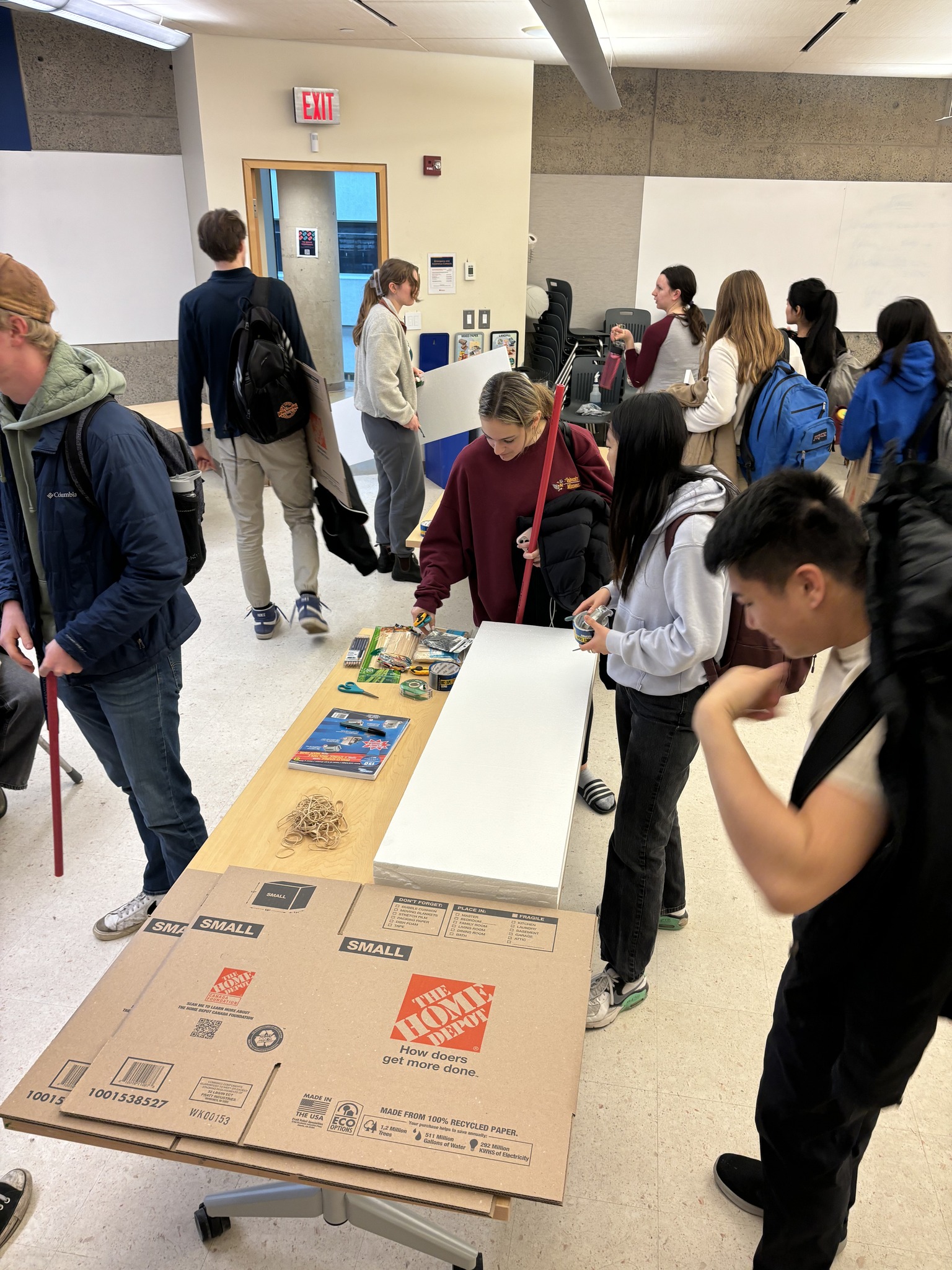Earlier this year, students from Queen’s Biomedical Innovation Team (QBiT) (new window) and Queen’s BioMechatronics Team (QBMeT) (new window) at Queen’s University took part in a design sprint with Neil Squire’s Makers Making Change (new window) program.
 Students split into teams to take on two design challenges from people with disabilities in the Makers Making Change community over the span of a four-hour session — one was to design a cupholder for platform crutches, while the other was a device to help a child with cerebral palsy hold paper to cut with scissors.
Students split into teams to take on two design challenges from people with disabilities in the Makers Making Change community over the span of a four-hour session — one was to design a cupholder for platform crutches, while the other was a device to help a child with cerebral palsy hold paper to cut with scissors.
They had to use rudimentary supplies to design a working prototype. At the end of the session, the students presented their projects.
“I was actually quite impressed with the innovation of the projects,” says 2023/24 QBiT co-captain Kaito, a fifth year applied mathematics and engineering student, and one of the judges. “With the materials that we provided them, they delivered quite well, and it was very functional.”
“It was a very fun exercise,” says Emma, 2023/24 QBiT co-captain and third year biochemical engineering student. “I think it was very good at just developing the engineering judgment and design process, because they really did consider a lot of good aspects, like making sure it was safe to use and easy. And being creative with the materials they were given.
“For the platform crutch cupholder, we even had them try and do more stability things. So the cup holder swung almost with the crutch to have it not spill over and stuff like that. I was like, ‘I wouldn’t have even thought of that,’ which was really cool.”
The design sprint connected well with QBiT’s mission — QBiT was previously a member of our Clubs That Care initiative — and gave the design teams a chance to work on a shorter project as compared to the longer-term projects they work on as a team over the course of the school year.
“The ability for us to apply our skills and help other people’s the focus of our club, and I think it connects a lot with Makers Making Change,” Emma shares. “In engineering, it’s so theoretical all of our classes, it’s nice to actually be able to design something for someone.
“It’s such a great cause, and it’s also just a really enjoyable thing that gives people some good hands-on building time as well.”
Kaito also pointed to the growing interest on campus for groups interested in designing for disability, and that events like the design sprint fill that gap.
“I think it’s a great opportunity for people who are interested in doing that to kind of have fun, and connect with other people who are also interested in this, too,” he says.
This post originally appeared on the Makers Making Change (new window) website.
